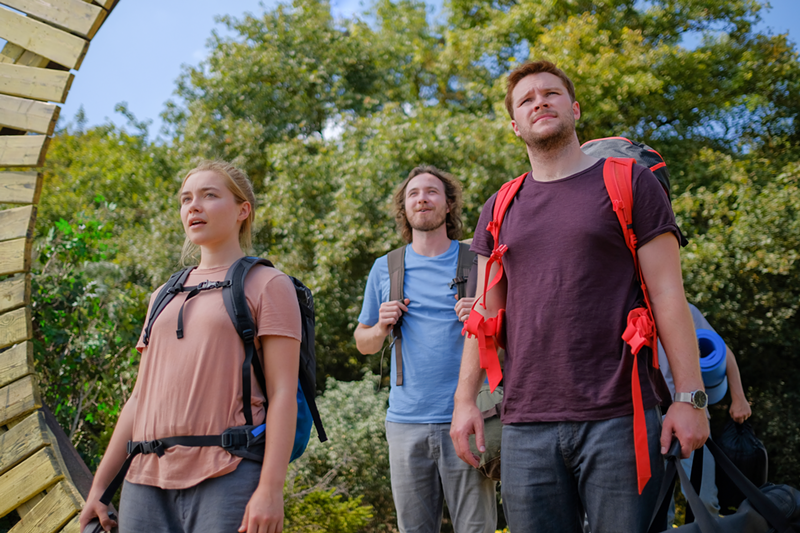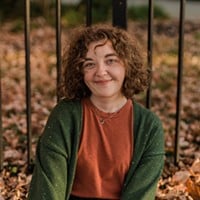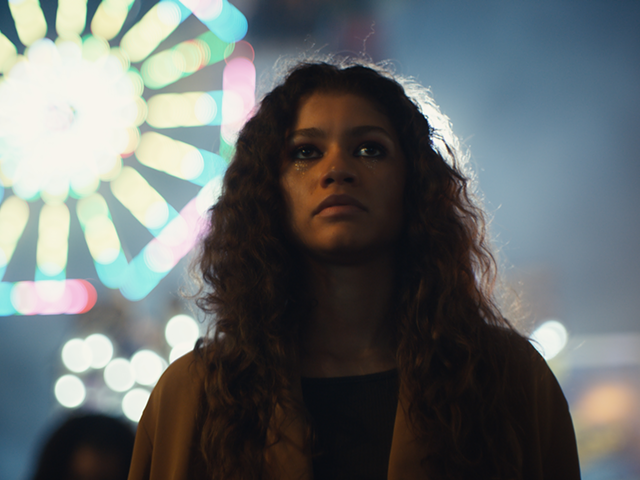
Midsommar begins with a sharp inhale and ends with an exhale.
From the start, director Ari Aster plunges viewers straight into grief. At the center is Dani (Florence Pugh), an American psychology student in the midst of unfathomable trauma.
Even before this, her relationship with long-term boyfriend Christian (Jack Reynor), an anthropology graduate student, was on the outs. When he and his friends make plans to travel to Sweden to attend a midsummer festival — as invited by Swedish exchange student Pelle (Vilhelm Blomgren) — he invites her to join them, not out of want but out of guilt. Also on the trip are vaping bro Mark (Will Poulter) and fellow anthropology student Josh (William Jackson Harper),
As those facing severe anxiety and devastating loss often do — especially in the absence of a strong support system — Dani brushes off her emotional pain with several “I’m OK” moments. Except, of course, she is not OK in the slightest. She holds in her pain. In other moments, we see her experience panic attacks. Lights pulsate, moans fill the soundscape and her body writhes. As the film progresses, these neuroses are splayed out and made open for dissection.
Midsommar marks Aster’s follow-up to last summer’s divisive domestic terror Hereditary. Though both films hinge on family tragedy, grief and mental illness, they do so in completely disparate ways. Where Hereditary is contained to a singular home, Midsommar plays out almost entirely outdoors in a stunning Swedish village where the blue sky is blinding, the sun hardly sets and all of the locals don flowy frocks and flower crowns.
A visceral work of folk-horror, Midsommar is often nausea inducing; at the same time, the sun-dappled, flower-laden world is strangely beautiful. This juxtaposition makes the shock of violence all the more assaulting. And though gut-wrenching, there are comedic moments that douse the film in absurdity.
Pelle is from the aforementioned village and he gives little information to his friends as to what the festival will actually entail. He shows them photos of smiling women dressed in all white backdropped by a lush landscape. This setting is in stark contrast to the static-filled, snowy environment where we first meet the characters. A diversion from other similar midsummer festivals, Pelle describes his village’s take as a “crazy nine-day festival” high in theatrics that only occurs every 90 years. (He coins his hometown a commune, but it unfolds more like a cult.)
The set-up is easy enough to believe. As a 20-something myself, this is a vacation I’d opt to take if given the chance — these unsuspecting characters just so happened to take the bait. I mean, stripped of the pagan rituals and alarming body count, Midsommar could have been a trippier EuroTrip.
Director Aster is undoubtedly talented. He knows how to make his audience hurl and take on the swirling emotions of his characters. In short, Midsommar is a highly disturbing mindfuck. Aside from out-in-the-open gore, uncanny and often repetitive imagery, Aster also employs dizzying effects.
In the opening act, the characters drive toward the village along a road enshrouded by forestland: a classic stock image from the horror movie tradition. But then the screen flips upside down, as if the group is entering the Twilight Zone. Once they reach the village’s archway, the screen flips back to normal. Though small, the moment feels like part of the rituals that follow.
The presence of psychedelics is also a thread that runs throughout the film: food on the table expands and deflates as if breathing; the pistil of a flower in Dani’s crown does the same; memories and present day intersperse; faces become blurs or, quite the opposite, alarmingly in focus.
In a pivotal scene, Dani participates in a dancing ritual with other women in the commune. They first sip a psychoactive concoction before joining in a circle around a maypole, a tall, phallic wooden pole rooted in European folklore. At first uneasy, she becomes uninhibited. The women laugh, dizzy with giddiness. On the sidelines is Christian, who feels more distant than ever.
That scene is the precursor for the mind-bending ending. At the risk of revealing too much, a discovery is made by Dani that cracks her. She wails, clutching her body. The other women collapse over her, collectively feeling the pain. It’s the first time in the film that Dani feels quite literally held.
At its core, Midsommar is a horrific breakup film that dives headfirst into trauma. In the light of summer, we exhale the cruelty of Dani’s winter. Renewal is pain. Like Hereditary, Midsommar leaves us with flames.
Grade: A (In theaters July 3)






